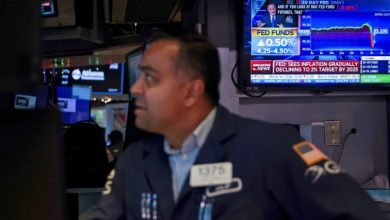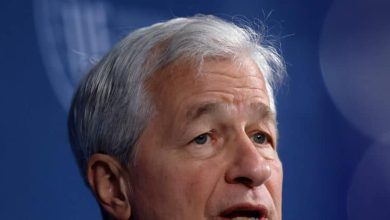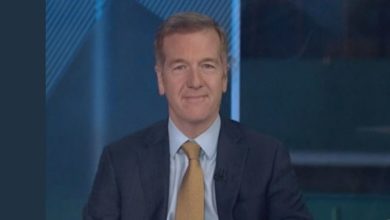Top Economist Mark Zandi Predicts A Recession Is On Its Way to Hit America: 7 Predictive Signs

Moody’s chief economist warns tariffs and immigration policy will trigger downturn even as Fed considers rate cuts
Mark Zandi, chief economist at Moody’s Analytics, is sounding the alarm that America stands “on the precipice of recession” despite Federal Reserve Chair Jerome Powell’s hints at potential interest rate cuts following weak July jobs data.
The economist’s stark warning comes as multiple indicators suggest consumer behavior is shifting toward recession-era patterns, from increased soup purchases to declining champagne sales.
Zandi: Rate Cuts Won’t Be Enough
Unlike many analysts who view Fed rate cuts as economic lifelines, Zandi argues that monetary policy alone cannot offset the structural pressures facing the economy. He specifically cited President Trump’s tariff policies and immigration restrictions as forces that will drive the economy into recession regardless of Fed intervention.
“The tariffs are cutting increasingly deeply into the profits of American companies and the purchasing power of American households,” Zandi said in recent social media posts. “Fewer immigrant workers means a smaller economy.”
The economist’s pessimism stands in contrast to Powell’s cautious optimism expressed at the Jackson Hole conference, where the Fed chair suggested rate cuts might be warranted while acknowledging that tariff-driven inflation could complicate policy decisions.
Labor Market Shows Cracks
July’s dismal jobs report provided ammunition for Zandi’s recession thesis. The economy added just 73,000 jobs, well below expectations, while June and May figures were revised down by a combined 258,000 positions. The unemployment rate ticked up to 4.2%.
Federal government employment declined by 12,000 in July and has dropped 84,000 since January, reflecting the impact of Elon Musk’s Department of Government Efficiency cost-cutting measures. Professional and business services also shed 14,000 jobs.
“While the unemployment rate had remained low, the growth of the US labor force had ‘gone sideways’ as participation falls and the foreign-born workforce continues to shrink,” Zandi noted.
7 Strongest Recession Warning Signs
Consumer behavior patterns are increasingly pointing toward economic distress across multiple sectors:
Campbell’s Soup Surge: The company reported the highest preference for home-cooked meals since early 2020, with CEO Mick Beekhuizen noting consumers are abandoning restaurants for cheaper alternatives as budgets tighten.
Pizza Market Collapse: Bloomberg analysis shows low-income consumers being “priced out of pizza,” with average large pizza prices up 30% since 2019 to $18.19. Same-store sales dropped at Pizza Hut, Papa John’s, and Domino’s.
Men’s Underwear Index: Calvin Klein saw fourth-quarter revenue drop 5% due to “tougher macroeconomic backdrop,” confirming Alan Greenspan’s recession indicator that men defer underwear purchases during economic stress.
Champagne Sales Crash: Luxury bubbly sales dropped dramatically in 2024 and continued declining into 2025. “This is no time for celebration,” said Champagne industry president Maxime Toubart, citing inflation and global uncertainty.
Walmart’s Tariff Warning: CEO Doug McMillon warned that tariff costs are increasing weekly, forcing the retail giant to raise prices on 10% of imported goods while absorbing mounting losses on the rest. Although companies like Walmart, Target, and Amazon can absorb tariffs and start passing price increases onto consumers or eating costs themselves, most small businesses may not survive unpredictable tariff shocks with no room to raise prices or cut into their profit margins.
AI Megacap Bubble: OpenAI CEO Sam Altman admitted investors are “overexcited about AI,” while Bank of America analysis shows the “nifty fifty” largest stocks outperformed the rest by 73 percentage points over ten years—mirroring the 1990s tech bubble run-up. The Magnificent Seven’s combined market cap now exceeds China’s GDP, built on AI investments that may never generate sufficient revenue to justify valuations.
Snack Food Retreat: Major companies report declining discretionary snack purchases, with Nestle posting its weakest sales growth in two decades and PepsiCo seeing 4% volume drops in savory snacks.
Corporate Leaders Sound Alarms
Tesla CEO Elon Musk predicted earlier this year that tariffs “will cause a recession in the second half of this year.” A Chief Executive survey in May found 46% of CEOs forecast a recession within six months, while Goldman Sachs pegged recession odds at 35%.
Ray Dalio, founder of Bridgewater Associates, warned of something “worse than a recession” if economic policies aren’t handled properly.
Fed Rate Cuts Could Signal Deeper Problems
The prospect of Fed rate cuts may actually represent a troubling economic signal rather than a relief measure. If the central bank feels compelled to cut rates due to deteriorating economic conditions while inflation remains elevated above the 2% target, it could indicate the economy is weaker than officials want to admit.
Cleveland Fed President Beth Hammack expressed serious reservations about rate cuts during the current inflationary environment. “We’ve been above our [inflation] target for four years, and we need to get that under control,” she told CNBC. “I don’t want to move us to a place where we’re being accommodative, because I worry that if we’re accommodative, we could reinvigorate the inflationary pressures.”
Hammack’s concerns highlight a dangerous scenario: the Fed may be forced to choose between supporting a weakening economy and maintaining price stability. Cutting rates while inflation persists could signal that economic conditions are deteriorating so rapidly that the Fed is willing to risk reigniting price pressures.
This dynamic creates what economists call a “policy trap” – where the Fed’s traditional tools become counterproductive. Rate cuts intended to stimulate growth could instead fuel inflation expectations, ultimately making both economic problems worse.
President Trump continues pressuring the Fed for aggressive rate cuts, calling Powell “a stubborn MORON” and demanding immediate action. However, capitulating to political pressure for cuts during an inflationary period could undermine the Fed’s credibility and signal that economic fundamentals are more fragile than publicly acknowledged.
Market Response Mixed
Following Powell’s Jackson Hole remarks suggesting possible September rate cuts, markets initially rallied. However, Walmart’s tariff warnings and weak employment data have renewed concerns about the economic outlook.
The Fed faces a challenging balance between supporting a weakening labor market and managing inflation pressures from tariff policies. Zandi’s prediction that even rate cuts won’t prevent recession adds urgency to the debate over monetary policy effectiveness in the current environment.
As economic indicators increasingly point toward consumer retrenchment and business uncertainty, the coming months will test whether traditional Fed tools remain effective against the structural economic pressures Zandi identifies.




